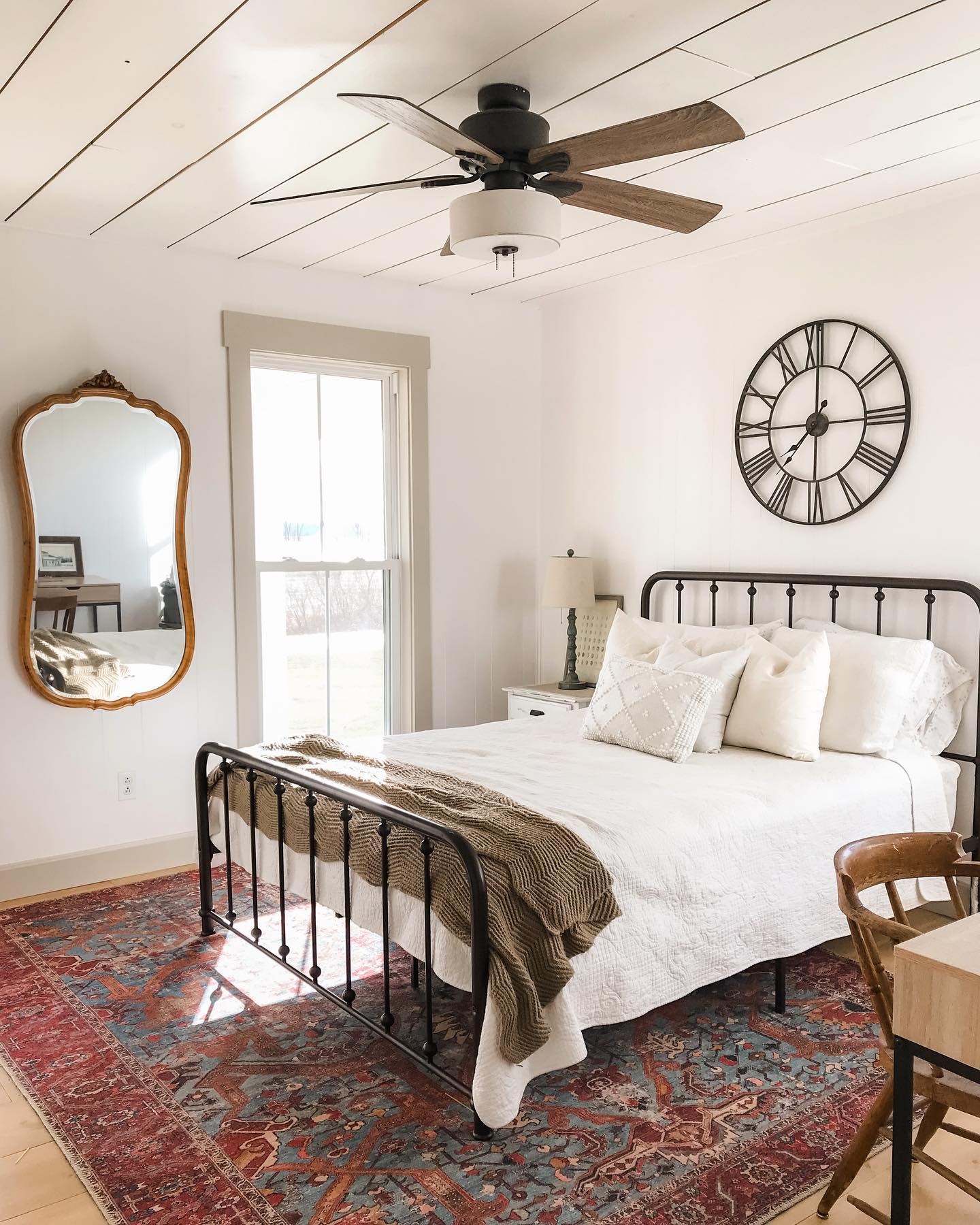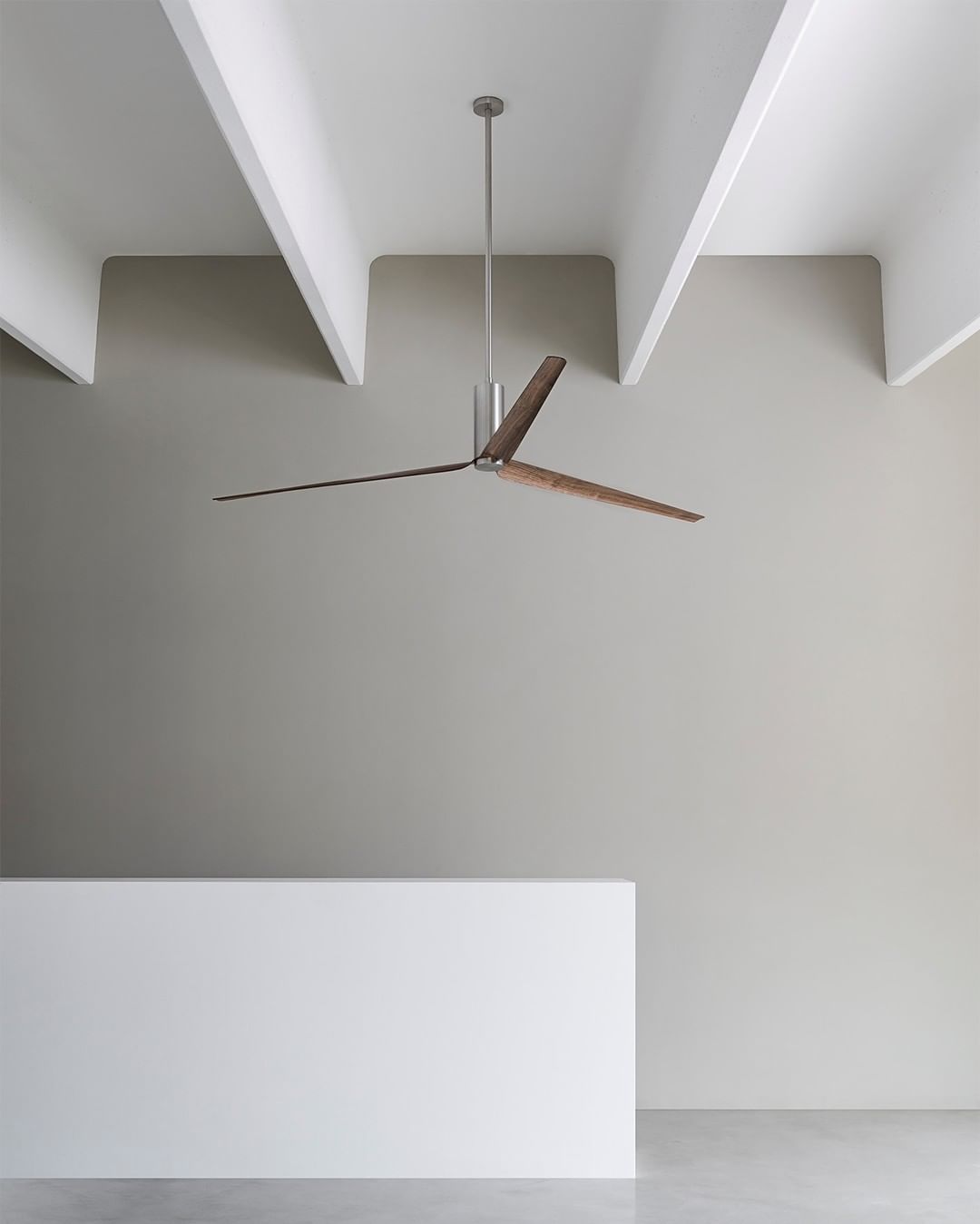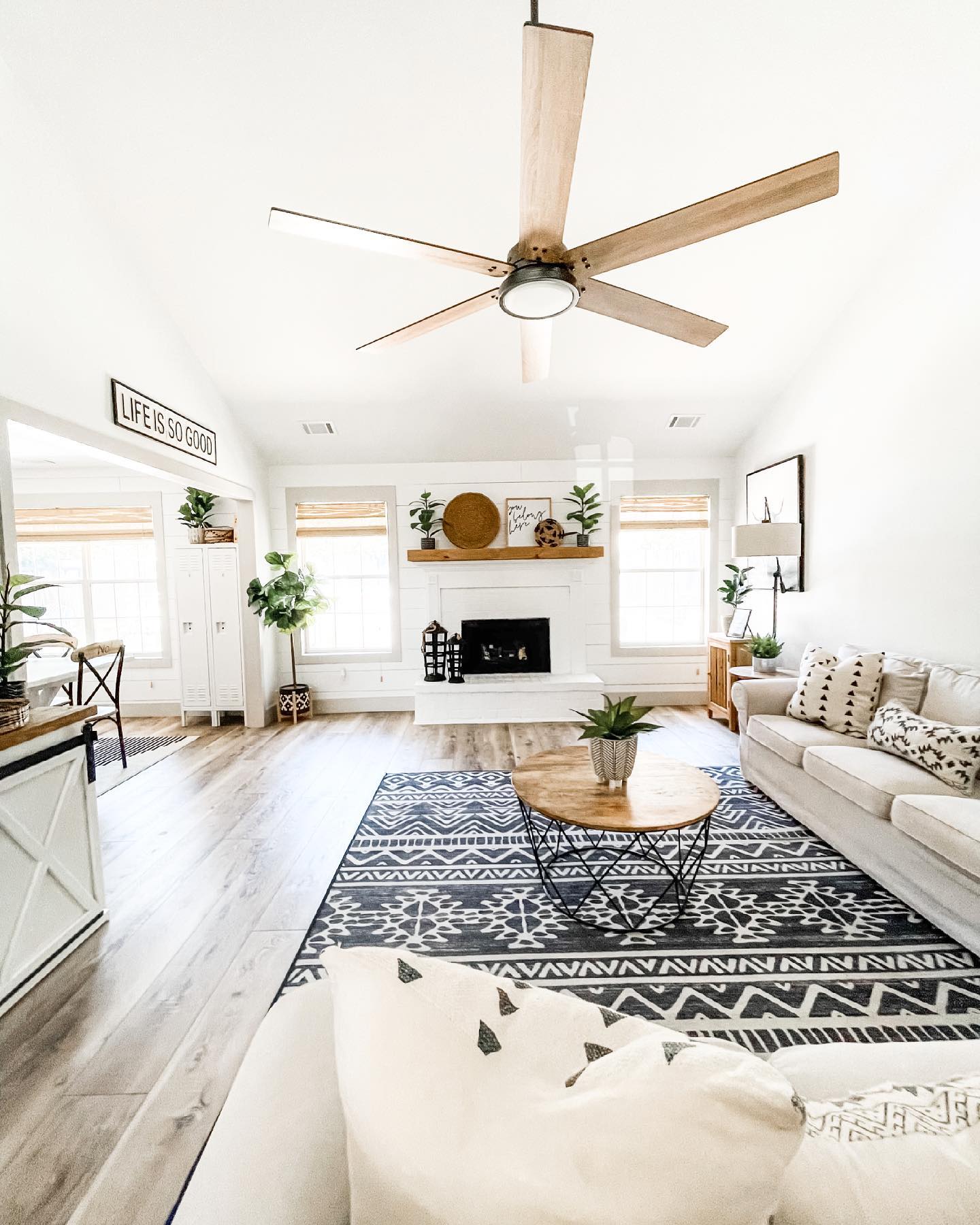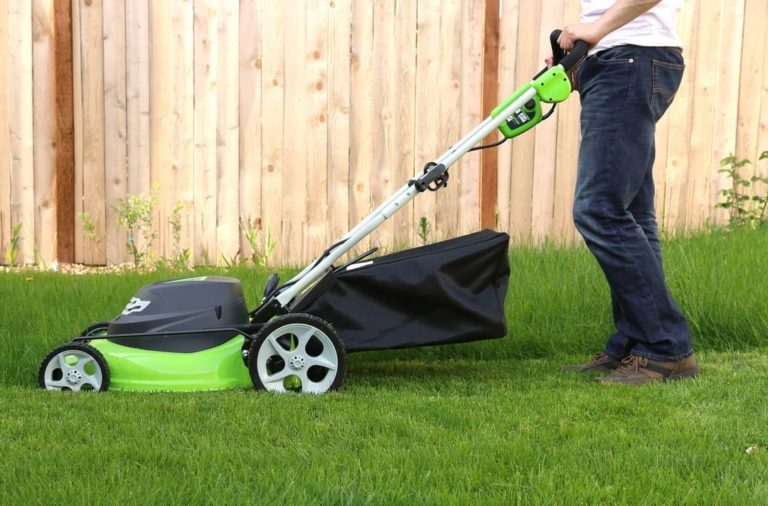Get the Features You Need in a New Ceiling Fan
Ceiling fans are getting more and more popular lately as homeowners are finding that they’re cheap to operate and make a big difference to the comfort level of your home. And these days you have a lot more options than a basic ceiling fan with lights, a pull chain, and three speed settings.

You can get ceiling fans that have a lot of features, including a quiet-running DC motor, smart connectivity, wireless wall controls, and more. Hanging a fan outdoors? You can buy indoor/outdoor ceiling fans that are totally waterproof and able to withstand the elements. You can even buy marine-rated fans that can stand up to the salt winds of coastal and island areas.
Smart Controls
Smart controls and wireless remote controls are among the most useful features on modern fans. No more groping around overhead for a pull chain to turn your fan off and on or change its speed setting! Now you can just log into your smartphone and adjust the fan from there. You can also connect your smart fan to your smart home device in order to control it with voice commands.
Of course, if you’re not interested in buying a fan that connects to the internet, there are other options that are just as convenient. You can buy fans with wireless wall control panels so you can turn your fan up or down, dim the lights, or reverse the direction of the blades with the push of a few buttons. You can also get remote-control fans, which are just as easy to control. Smart and remote control fans are ideal for people who can’t use pull chains, such as the elderly, the disabled, and, of course, the short.

DC vs. AC Motors
You can buy fans with either direct current (DC) or alternating current (AC) motors. Though they’re more expensive, fans with DC motors are considered better than fans with AC motors. They use less electricity, and are therefore cheaper to run – although most ceiling fans cost just pennies to run for a few hours a day, anyway. DC motor fans are also quieter, and can offer a wider variety of speed control functions.
Water Resistance
If you’re hanging your new ceiling fan in an indoor area where it won’t be exposed to moisture and humidity – for example, a bedroom or living room – then you don’t need to worry about water resistance, as your fan won’t be encountering any water (and if it does, you’ve got bigger problems). However, if you’re hanging your fan in a kitchen or bathroom, where it may encounter humidity and moisture, you want to get a damp- or wet-rated fan. And you definitely want a wet-rated fan if you’re hanging it outdoors, on a covered porch or patio. Even if the fan will be protected somewhat from the elements, you still need the extra waterproofing that an outdoor-rated fan provides.
Lights
You can buy a ceiling fan with lights to hang in any space where you need both climate control and overhead lighting. Many ceiling fans with lights now come with LED lights – they’re a good choice because they’re long-lasting, use much less electricity than traditional incandescent and fluorescent lights, and don’t heat up at all.
Size
Ceiling fan size is probably the most important consideration when you’re shopping for ceiling fans. You need to make sure you get the right size fan for your room, or else you’re going to find yourself with a fan that is either too powerful or not powerful enough. Neither of those is a good place to be in.

Ceiling fans start at about 29 inches across and go up to 80 inches across or more. Most home ceiling fans will be in the neighborhood of 36 to 54 inches. Choose your fan sized based on the square footage of your room:
- Under 75 feet: 29 to 36 inches
- 76 to 144 square feet: 36 to 42 inches
- 145 to 224 square feet: 44 to 48 inches
- 225 to 400 square feet: 50 to 56 inches
You can choose even larger fans if your room is larger than 400 square feet. You can even put up more than one fan in a very large space.
Design
You should choose a fan design that goes with the rest of your decor. There are lots of different designs to choose from, ranging from sleek contemporary looks to traditional cottagecore looks and everything in between. If you want to get extra fancy, you can choose a ceiling fan with chandelier lights. If you want a more utilitarian look, you can choose an industrial fan with a fan cage or even a dual-motor with two sets of blades. Grab the one that works best with the colors, finishes, and styles in the room where it will hang, but remember – a ceiling fan is a permanent fixture, so it’s better to match it to the wood and metal finishes of the floor, trim, and hardware than to the furniture and decorative items.
Ceiling fans these days come in a whole new range of styles, with features that can significantly improve their functionality. Get out there and see what ceiling fan manufacturers have to offer. You’re going to love your new ceiling fan.






